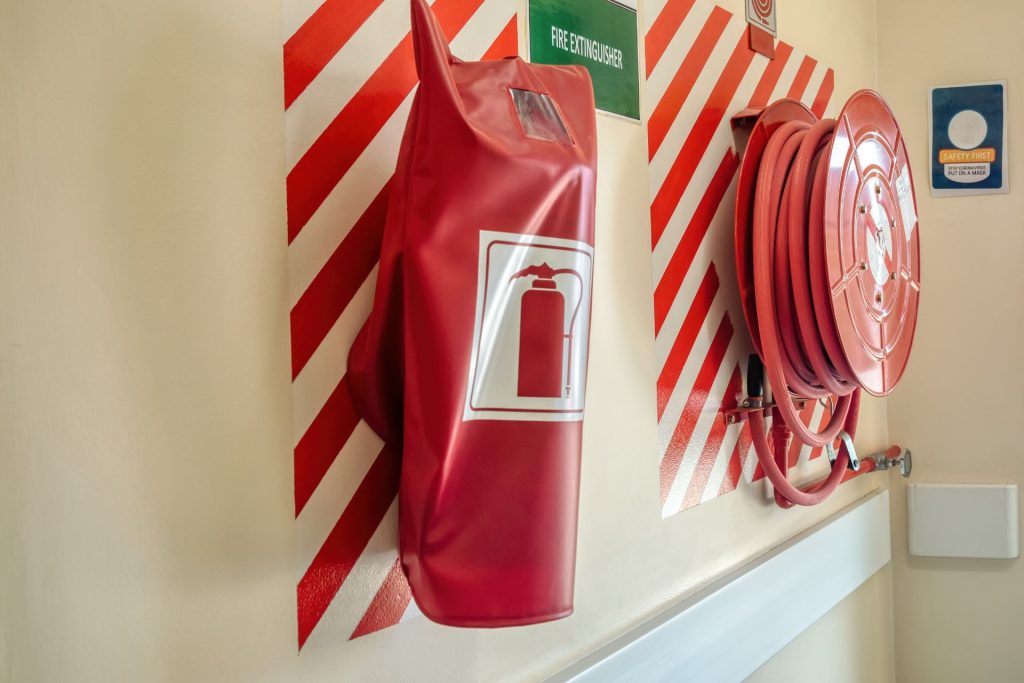BLOG
Fire extinguishers are a critical safety feature on domestic commercial vessels. For operators and owners, ensuring the essential safety tools are regularly maintained is not just a regulatory requirement – it’s a key component of marine safety for passengers and crew. Here, we discuss why servicing fire extinguishers is essential, the regulations that guide maintenance, and best practices for compliance.
Why Regular Servicing of Fire Extinguishers is Essential
Fire extinguishers are the first line of defence against onboard fires. Given the risk associated with fuel, electrical systems, and other fire hazards on vessels, having functional and reliable fire extinguishers can be lifesaving. However, over time, extinguishers can become corroded, lose pressure, or otherwise degrade, which can potentially result in failing during an emergency.
Regular servicing helps ensure that extinguishers:
- Operate correctly in emergencies: A fire extinguisher that hasn’t been serviced may not discharge properly, putting the vessel, crew and passengers at greater risk.
- Meet regulatory requirements: Australian marine safety regulations mandate that fire safety equipment is properly maintained
- Provide peace of mind for operators and crew: Knowing that safety equipment is up to date enables crew members to operate with confidence in an emergency.
Understanding AMSA Regulations and Compliance

The Importance of Servicing Fire Extinguishers on Domestic Commercial Vessels in Australia
The Australian Maritime Safety Authority (AMSA) has stringent guidelines for fire extinguisher maintenance on domestic commercial vessels. Under the National Standard for Commercial Vessels (NSCV), owners and operators must adhere to specific maintenance schedules for firefighting equipment to ensure compliance.
Key Regulatory Guidelines
According to the ‘AMSA Guidance Notice – Inspection of portable fire extinguishers (stored pressure type)’, the Australian Standard AS 1851-2012 Routine Service of Fire Protection Systems and Equipment requires six-monthly, twelve-monthly and five-yearly inspections of portable fire extinguishers.
Six-monthly Inspections
AMSA accepts that the six-monthly checks of water, foam, and dry chemical (stored pressure) portable fire extinguishers, as required by AS 1851 may be conducted by a member of the vessel crew who has a current Certificate of Competency (other than General Purpose Hand).
Only competent persons or organisations shall undertake the servicing of fire safety equipment. Competence shall be relevant to the particular type of equipment. Competent persons or organisations shall be one of the following
a) Accredited or licensed by an appropriate Authority or fire administration within the jurisdiction;
b) The manufacturer, an agent of the manufacturer or a service station approved by the manufacturer; or
c) Accredited or licensed by a Classification Society.
NOTE: Subclause a) above provides that members of the vessel‘s crew may undertake servicing functions specified in AS 1851 to the extent that those functions fall within the crewmember‘s level of competence.
Alternately, the owner/operator of a vessel may choose to engage an accredited or licensed service provider to service fire equipment/appliances.
Twelve-monthly and Five-yearly Service and Inspections
An accredited or licensed service provider is required to complete the AS 1851 yearly and five yearly fire equipment/appliance service and inspections. Accredited Marine Surveyors or Marine Safety Inspectors may ask to see a service certificate from a service provider stating that the fire extinguishers/appliances have been serviced in accordance with AS 1851.
Note: The complete document is available to view and/or download at https://www.amsa.gov.au/sites/default/files/2023-11/amsa707_inspection_of_portable_fire_extinguishers.pdf
Recharging After Use
Any fire extinguisher that has been used, even partially, must be recharged immediately. This is a crucial requirement to ensure that the vessel has fully operational fire extinguishers in the event of another emergency.
Best Practices
Adopting a proactive approach to fire extinguisher maintenance can streamline compliance and improve safety outcomes. We recommend to:
- Have your crew conduct monthly visual inspections to catch early signs of wear and damage
- Train crew on fire extinguisher use
- Use digital tools to track service dates, set reminders and keep records
By following AMSA guidelines and committing to a proactive maintenance schedule, vessel owners can better protect their vessel, crew, passengers, and cargo from the risk of onboard fires.
We’re here to help. Should you have any questions or need assistance with interpreting regulations, feel free to reach out.





